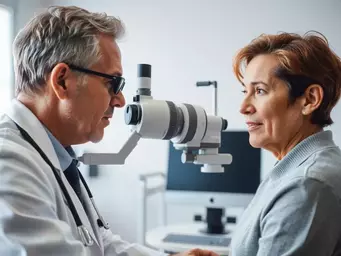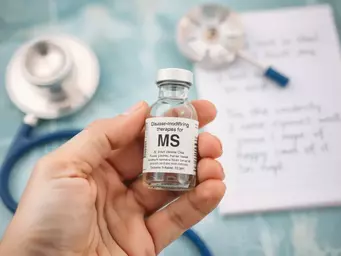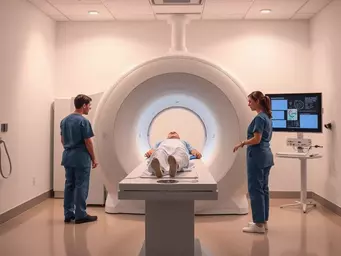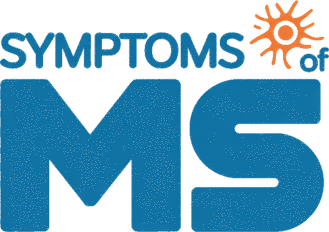OCT's Role in MS Diagnosis
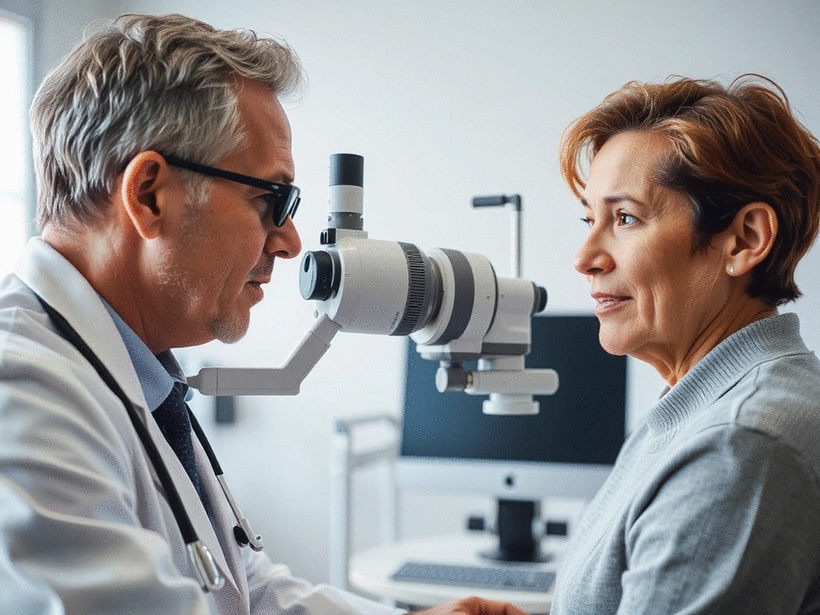
As the landscape of medical diagnostics evolves, one technique is making waves in the world of multiple sclerosis (MS) — Optical Coherence Tomography (OCT). This non-invasive imaging tool not only enhances our understanding of MS but also transforms patient experiences. What insights could OCT bring to your healthcare journey?
What You Will Learn
- OCT provides high-resolution, cross-sectional images of the retina, critical for assessing neurodegeneration in MS patients.
- The non-invasive nature of OCT makes it an appealing option for regular monitoring without discomfort.
- Quick results and cost-effectiveness of OCT enhance accessibility for a broader patient population compared to traditional imaging methods.
- OCT has a high diagnostic accuracy for identifying neurodegeneration, offering valuable insights to guide treatment and monitor progress over time.
OCT: A Diagnostic Game-Changer for MS
Optical Coherence Tomography (OCT) offers significant advantages in diagnosing and monitoring Multiple Sclerosis (MS) compared to traditional methods.
Benefits of OCT for MS Diagnosis
- ✓High Resolution (up to 5 micrometers)
- ✓Real-Time Imaging (minutes per scan)
- ✓Non-invasive & Painless
- ✓Fast Results
- ✓Cost-Effective vs. MRI
- ✓Widely Accessible
OCT vs. Traditional Imaging (MRI)
OCT:Focuses on retinal changes, early neurodegeneration detection.
MRI:Examines larger brain structures, valuable but less specific for retinal health.
OCT:No radiation exposure, safe for frequent scans.
MRI:Involves radiation, limits frequency of scans.
Understanding Optical Coherence Tomography (OCT) for Multiple Sclerosis (MS) Diagnosis
As we explore the world of multiple sclerosis (MS) diagnosis, it's vital to understand the role of Optical Coherence Tomography (OCT). This innovative imaging technique has gained traction in recent years for its ability to provide detailed insights into the health of the retina and optic nerve, both of which can be impacted by MS. By utilizing OCT, we can gather crucial information that assists not just in diagnosing MS, but also in monitoring its progression.

Imagine having a tool that allows us to visualize the inner layers of the eye non-invasively. That’s what OCT does! This technology uses light waves to take cross-section pictures of the retina, revealing its structure in such detail that we can assess potential neurodegeneration associated with MS.
What is Optical Coherence Tomography (OCT)?
Overview of OCT Technology and Its Functionality
Optical Coherence Tomography (OCT) is a cutting-edge imaging method that provides high-resolution, cross-sectional images of the retina. By employing light waves, OCT creates a detailed picture of the retinal layers, allowing for an assessment of their thickness and overall health. This imaging technique can detect early signs of neurodegeneration, which is essential for timely intervention in MS.
- High Resolution: OCT offers images with resolutions up to 5 micrometers.
- Real-Time Imaging: The scans are quick and can be performed in a matter of minutes.
- Non-invasive: Patients experience no discomfort, making it suitable for regular monitoring.
In essence, OCT serves as a window into the physiological changes occurring in the eyes of MS patients. By understanding these changes, we can better illuminate the disease's impact and guide treatment strategies.
Importance of Non-Invasive Imaging in Clinical Settings
The non-invasive nature of OCT is a game changer in clinical settings. Patients can undergo this procedure without the need for injections or anesthesia, making it a more appealing option for frequent evaluations. I often share with my patients that this ease of access is crucial, especially when considering the regular monitoring required for managing MS.
Additionally, the data obtained from OCT can supplement findings from other diagnostic tools, enhancing our ability to make informed decisions about care. For example, a recent study highlighted OCT's usefulness in evaluating disease progression and treatment effectiveness in MS patients, as detailed in this publication from PMC NCBI. This comprehensive approach is vital in a condition like MS, where early intervention can significantly alter the disease trajectory.
Why Optical Coherence Tomography is Gaining Attention in MS Diagnosis
Benefits of OCT: Speed, Cost-Effectiveness, and Accessibility
OCT is rapidly becoming a preferred choice for diagnosing MS due to its numerous advantages. Firstly, the speed of the imaging process means that patients can receive results almost immediately, which can be incredibly reassuring. Secondly, OCT is cost-effective compared to traditional imaging methods, such as MRI, making it accessible to a broader patient population.
- Fast Results: Patients do not have to wait long for their scan results.
- Lower Costs: Generally more affordable than other imaging options.
- Increased Accessibility: Available in many clinics, making it widely accessible.
These factors combined make OCT an essential tool in the ongoing effort to improve MS diagnosis and management, ultimately leading to better patient outcomes.
Comparative Analysis of OCT and Traditional Imaging Techniques
When we compare OCT to traditional imaging techniques like MRI, the differences become clear. While MRI provides valuable information about larger brain structures, OCT focuses specifically on the retinal changes that can indicate neurodegeneration in MS patients. This targeted imaging can often detect changes earlier than an MRI, making it a powerful ally in our diagnostic toolkit.
Moreover, OCT does not involve radiation exposure, which is an added benefit for patients who may require frequent scans. This safety aspect makes it an attractive option for monitoring disease progression.
Diagnostic Accuracy of OCT in Identifying Neurodegeneration
Research has shown that OCT has a high diagnostic accuracy when it comes to identifying neurodegeneration in MS. The ability to quantify retinal nerve fiber layer (RNFL) thickness is particularly important. A thinner RNFL can indicate greater neurodegeneration, which correlates with disease severity, as discussed in this Neurology.org article. With OCT, we can track these changes over time, offering insights into how well a patient's treatment is working and adjusting it as necessary. This ongoing assessment is instrumental in promoting long-term health for those navigating the complexities of MS.
Pro Tip
For those navigating the complexities of multiple sclerosis, consider keeping a journal of your OCT results and any symptoms you experience. This practice not only helps you track changes over time but also provides valuable insights that you can discuss with your healthcare provider during appointments. Being proactive about your eye health can significantly enhance your overall treatment strategy.
Implications of Optical Coherence Tomography for Patients and Providers
As we dive deeper into the realm of Optical Coherence Tomography (OCT), understanding its implications for both patients and healthcare providers becomes essential. This advanced imaging technique not only offers insights into multiple sclerosis (MS) diagnosis but also significantly enhances the patient experience. It’s crucial to recognize how OCT impacts patient-centered outcomes and healthcare delivery.
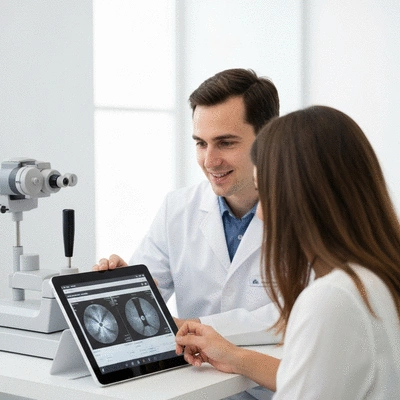
By integrating OCT into clinical practice, we can foster a more informed and empowering environment for patients. This approach aligns perfectly with my mission at Symptoms of MS, where we strive to demystify medical processes and ensure that individuals facing MS receive the best possible care.
Patient-Centered Outcomes and Experiences with OCT Diagnostics
Understanding patient perspectives on OCT is a vital step in appreciating its role as a diagnostic tool. Many patients appreciate the non-invasive nature of OCT, which often leads to a more comfortable experience compared to traditional imaging methods. Through personal interactions, I’ve seen how patients value the clarity that OCT brings to their understanding of their condition.
- Patients often report feeling more engaged in their care when they receive clear, visual representations of their eye health.
- The speed of OCT procedures allows patients to spend less time waiting for results, enhancing their overall experience.
- Many find reassurance in having a straightforward, non-invasive test that aids in monitoring their condition.
During OCT procedures, patients can expect a quick, painless experience that typically lasts only a few minutes. This efficiency is particularly beneficial for individuals managing chronic conditions like MS, as it minimizes the burden of lengthy diagnostic processes. Additionally, regular eye health monitoring through OCT can have a positive impact on patient outcomes, leading to early intervention and potentially better management of their health. The National MS Society highlights the importance of updated diagnostic criteria, which increasingly recognize the value of non-invasive tools like OCT.
Cost-Benefit Analysis of Implementing OCT in Clinical Practice
From a provider’s perspective, conducting a thorough cost-benefit analysis of implementing OCT is essential for sustainability. When evaluating the economic viability of OCT compared to other imaging techniques, several factors come into play:
- Initial investment costs versus long-term savings through early and accurate diagnoses.
- Reduction in the need for more invasive testing and potential complications.
- Streamlined workflows that can enhance clinic efficiency and patient throughput.
Over time, the long-term benefits of incorporating OCT into clinical practice can significantly outweigh the initial costs. Healthcare institutions can expect improved patient satisfaction, reduced diagnostic times, and ultimately, better health outcomes for patients. In our experience at Symptoms of MS, these advantages translate into enhanced trust and loyalty from patients, which is invaluable in any clinical setting.
Moreover, the cost-effectiveness of OCT extends to managing disease-modifying therapies (DMT). By providing precise data on retinal health, OCT can guide treatment decisions and modifications, making it a vital tool in the ongoing management of MS.
Frequently Asked Questions (FAQs) about OCT for MS
What is Optical Coherence Tomography (OCT)?
OCT is a non-invasive imaging technique that uses light waves to create high-resolution, cross-sectional images of the retina and optic nerve. It helps detect early signs of neurodegeneration in conditions like Multiple Sclerosis (MS).
How does OCT help in diagnosing MS?
OCT helps in diagnosing and monitoring MS by visualizing the inner layers of the retina. Changes in retinal nerve fiber layer (RNFL) thickness can indicate neurodegeneration associated with MS, often earlier than traditional methods like MRI.
Is OCT painful or invasive?
No, OCT is a non-invasive and painless procedure. Patients experience no discomfort, making it suitable for regular monitoring without the need for injections or anesthesia.
How does OCT compare to MRI for MS diagnosis?
While MRI provides information about larger brain structures, OCT specifically focuses on retinal changes that indicate neurodegeneration. OCT can detect changes earlier and does not involve radiation exposure, making it a safe option for frequent scans.
What are the main benefits of OCT for MS patients?
The main benefits include high-resolution imaging, non-invasive nature, quick results, cost-effectiveness, and increased accessibility. These factors contribute to better patient monitoring, early intervention, and improved treatment outcomes.
Recap of Key Points
Here is a quick recap of the important points discussed in the article:
- High-Resolution Imaging: OCT provides detailed, cross-sectional images of the retina, essential for detecting early signs of neurodegeneration in MS.
- Non-Invasive Procedure: The non-invasive nature of OCT makes it a preferable option for frequent monitoring without discomfort.
- Cost-Effectiveness: Compared to traditional imaging methods like MRI, OCT is generally more affordable and widely accessible, enhancing patient care.
- Quick Results: Patients receive immediate results, offering reassurance and facilitating timely decision-making in their treatment plans.
- Enhanced Monitoring: OCT allows for ongoing assessment of retinal health, which is crucial in managing MS effectively over time.
